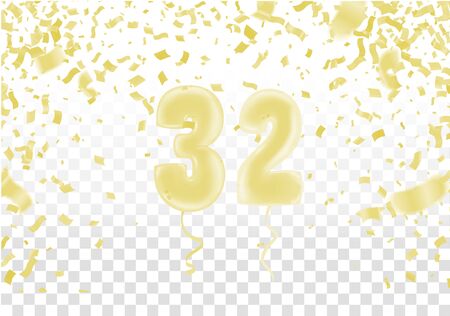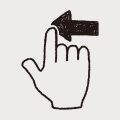1. Understanding the Fate Line: An American Perspective
For many Americans, the concept of palmistry—or reading the lines on your hand—might sound mystical or old-fashioned. However, as the workplace grows more diverse and global, curiosity about different ways to understand career potential is rising. The fate line, sometimes called the “career line,” is one of the most discussed features in palmistry. But what does it mean for American professionals?
What Is the Fate Line?
The fate line typically runs vertically from the base of your palm toward the middle finger. In traditional interpretations, this line is thought to reflect how much your life and career are influenced by external circumstances versus personal choices. While some cultures see it as a sign of destiny, in the U.S., people are often more interested in how it can relate to their professional ambitions and work-life balance.
Fate Line Interpretations in the U.S. Workplace
Unlike some countries where fate and destiny are seen as fixed, American culture often values self-determination and hard work. As a result, interpretations of the fate line here may focus less on predestination and more on opportunities, challenges, and adaptability at work.
| Fate Line Characteristic | Typical Interpretation | American Professional Context |
|---|---|---|
| Strong & Clear Line | Stable career path; clear direction | A focused career trajectory; likely to stick with long-term goals |
| Broken or Faint Line | Career changes or obstacles | Potential for job switches; adaptable to new opportunities |
| No Visible Fate Line | Self-made journey; less influenced by fate | A self-starter who creates their own path in business or entrepreneurship |
| Forked or Branching Line | Diversified interests; multiple talents | Likely to juggle side projects or have a multi-faceted career |
How Americans Use These Insights
In American professional circles, people might use fate line readings as a conversation starter or a way to reflect on their strengths and goals. It’s less about predicting the future and more about understanding one’s approach to career development and change.
Key Takeaway for Professionals:
If you’re curious about your own fate line, think of it as another tool for self-reflection. Whether you’re climbing the corporate ladder or forging your own path, interpreting your palm can spark new ideas about your next move in your professional journey.
2. The Fate Line and Career Paths in America
In American culture, the journey of building a career is often filled with unexpected twists, opportunities, and personal choices. The fate line, a feature in palmistry, can be seen as a powerful metaphor for these unique professional experiences. Just like the fate line runs up the palm—sometimes straight, sometimes with breaks or forks—career paths for American professionals rarely follow a simple or predictable course.
The Fate Line as a Metaphor for Professional Growth
For many Americans, professional life is about adaptability and growth. The fate line’s changes represent the transitions individuals face: switching industries, pursuing further education, or starting their own businesses. Each break or fork in the fate line can symbolize a major career decision or opportunity that shifts one’s direction. Instead of seeing these changes as setbacks, many American professionals embrace them as stepping stones to greater fulfillment and success.
How the Fate Line Reflects American Career Experiences
| Fate Line Pattern | American Career Parallel |
|---|---|
| Straight and clear | Stable job progression within one company or field |
| Breaks or gaps | Career changes, layoffs, sabbaticals, or re-skilling |
| Branches or forks | Pursuing side hustles, entrepreneurship, or dual careers |
| Deepening after mid-palm | Mid-career advancements or rediscovering passion later in life |
| Faint at the start, stronger later | Gradual rise after initial struggles or uncertainty early on |
Navigating Opportunities and Change
The American workplace encourages initiative and self-improvement. Much like interpreting your own fate line, professionals are encouraged to reflect on their strengths, seek mentorship, and make bold moves when opportunities arise. Whether you’re climbing the corporate ladder or forging your own path as an entrepreneur, viewing your career through the lens of the fate line can inspire you to recognize both challenges and possibilities as essential parts of your unique story.

3. Cultural Attitudes Toward Destiny and Personal Agency
In the United States, beliefs about destiny and personal agency are often shaped by core values like self-determination, ambition, and the famous “American Dream.” These attitudes play a significant role in how American professionals interpret concepts like the fate line and their own journey toward success.
American Values: Shaping Perspectives on Fate
The idea that anyone can achieve success through hard work is deeply rooted in American culture. Unlike some societies where fate is seen as fixed or preordained, Americans tend to believe in shaping their own futures. This mindset influences how people view the fate line—not as an unchangeable script, but as a guide that can be influenced by personal choices.
Key Values Compared to Fate Beliefs
| American Value | Description | Influence on Fate Line Perspective |
|---|---|---|
| Self-Determination | The belief that individuals control their own path | Fate line seen as flexible; change is possible with effort |
| Ambition | Desire to achieve more and move forward | Fate line interpreted as a starting point, not a limit |
| Optimism | Positive outlook on overcoming challenges | Setbacks on the fate line are viewed as opportunities for growth |
| Individualism | Value placed on unique paths and personal goals | Each person’s fate line story is seen as distinctive and adjustable |
The Role of Ambition and Self-Determination in Professional Life
For many American professionals, career planning is about setting goals and taking action. The fate line, when viewed through this cultural lens, becomes a tool for reflection rather than prediction. Professionals may use insights from palmistry to identify strengths or patterns, but they remain confident in their ability to shape outcomes through education, networking, and perseverance.
Cultural Conversations About Destiny vs. Effort
It’s common in American workplaces to hear phrases like “make your own luck” or “create your own destiny.” These sayings highlight a general preference for personal agency over passive acceptance of fate. While interest in topics like palmistry is growing, many see it as one piece of a larger puzzle—something that can inspire self-awareness but doesn’t override individual effort or ambition.
4. Workplace Implications: Decision-making and Growth
Understanding the Fate Line in an American Professional Context
The “fate line,” a concept from palmistry, can offer a unique lens for American professionals looking to better understand their strengths and weaknesses in the workplace. By reflecting on your fate line, you may discover insights that can help you make more confident decisions, embrace risks wisely, and adapt to changes common in dynamic U.S. workplaces.
How Your Fate Line Can Influence Key Professional Areas
| Aspect | Potential Impact of Fate Line Awareness |
|---|---|
| Leadership Choices | Recognizing patterns in your fate line may reveal natural leadership tendencies or caution areas. This self-awareness can help you choose leadership styles that suit you best, whether it’s collaborative or directive. |
| Risk-taking | A strong or prominent fate line is often associated with confidence and determination. Understanding this might encourage you to pursue calculated risks, essential for innovation and career progression in competitive American industries. |
| Adaptability | If your fate line shows breaks or shifts, it could symbolize adaptability. Being aware of this trait can reassure you when navigating job changes, new technologies, or organizational restructuring—common scenarios in U.S. companies. |
Practical Examples for American Workplaces
Let’s say you’re considering a promotion at your tech company in Silicon Valley. If your fate line suggests resilience and risk-taking, you might feel more comfortable stepping into a leadership role, even if it means facing unknown challenges. On the other hand, if your fate line shows frequent changes, you might excel in roles that require quick pivots and creative problem-solving—like working in startups or project-based environments.
Quick Tips for Applying Fate Line Insights at Work
- Self-Reflection: Take time to analyze your own preferences before making big decisions.
- Embrace Change: Use knowledge about your adaptability to manage transitions smoothly.
- Pursue Growth: Leverage your fate line’s strengths to seek new opportunities with confidence.
The Bottom Line for American Professionals
Understanding your fate line isn’t about predicting the future—it’s about gaining personal insight to navigate the modern U.S. workplace with greater awareness and flexibility. Whether you’re leading a team, considering a career shift, or aiming for personal growth, these reflections can serve as another tool in your professional toolkit.
5. Applying ‘Fate Line’ Insights to Professional Development
Using the Fate Line for Career Growth
The “fate line” in palmistry is often seen as a symbol of personal direction and life path. While it’s a mystical concept, American professionals can use its principles—self-reflection and self-awareness—to boost their careers. By thinking about your own “fate line,” you can better understand your strengths, challenges, and unique journey at work.
Actionable Strategies for Leveraging Self-Reflection
1. Identify Your Strengths and Passions
Take some time each week to consider what parts of your job excite you the most or where you naturally excel. This can help you align your tasks with your interests, leading to more satisfaction and better performance.
2. Set Clear, Personal Career Goals
Inspired by the fate line’s idea of a life path, set clear goals for your career. Break these down into short-term and long-term steps so you always know where youre headed.
| Goal Type | Example |
|---|---|
| Short-Term | Attend a professional workshop next month |
| Long-Term | Become a team leader within three years |
3. Embrace Feedback and Learn from Experience
Just as the fate line may change over time, your professional journey will have ups and downs. Seek feedback from colleagues and supervisors regularly, and reflect on both successes and setbacks to keep improving.
4. Practice Mindful Decision-Making
The fate line reminds us that every choice shapes our path. Before making major decisions at work, pause to consider how each option aligns with your values and long-term vision.
Quick Reflection Checklist:
- Does this decision support my career goals?
- Am I playing to my strengths?
- What can I learn from this situation?
Bringing Fate Line Wisdom into the Workplace
You don’t need to believe in palmistry to benefit from its lessons. By making self-reflection a regular habit, you can take charge of your professional destiny—just like tracing your own fate line, one step at a time.


